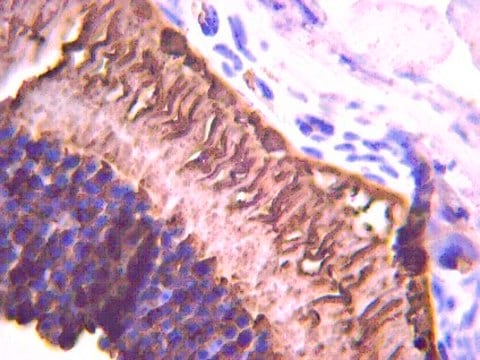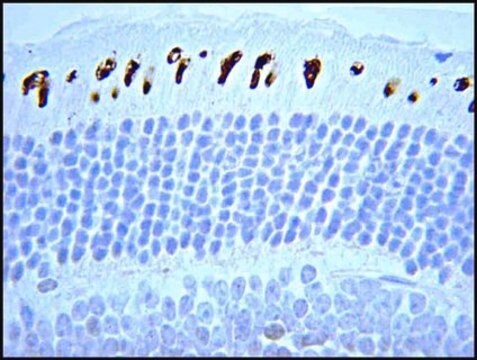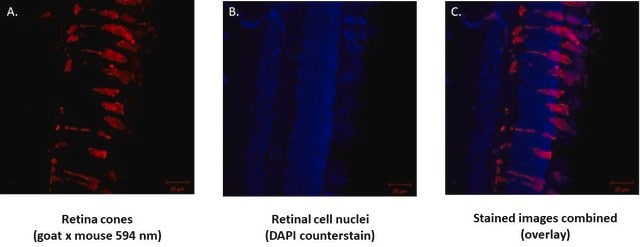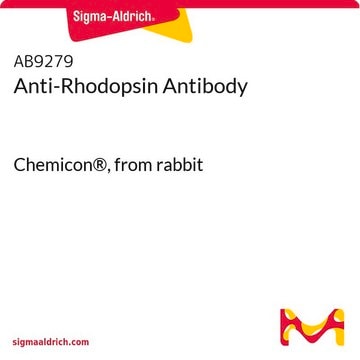MAB5356
Anti-Rhodopsin Antibody, CT, last 9 amino acids, clone Rho 1D4
clone Rho 1D4, Chemicon®, from mouse
Synonym(s):
Anti-CSNBAD1, Anti-OPN2, Anti-RP4
About This Item
Recommended Products
biological source
mouse
Quality Level
antibody form
purified immunoglobulin
antibody product type
primary antibodies
clone
Rho 1D4, monoclonal
species reactivity
vertebrates
manufacturer/tradename
Chemicon®
technique(s)
immunocytochemistry: suitable
immunohistochemistry: suitable
immunoprecipitation (IP): suitable
western blot: suitable
isotype
IgG1
NCBI accession no.
UniProt accession no.
shipped in
wet ice
target post-translational modification
unmodified
Gene Information
human ... RHO(6010)
Specificity
Immunogen
Application
Neuroscience
Sensory & PNS
Western blot of isolated bovine rod outer segment labeled for rhodopsin (~85% of rod outer segment protein) with the rho 1D4 antibody. Amount of rod outer segments applied to the SDS gel: (a) 2.5 mg; (b) 0.63 mg; (c) 0.16 mg; (d) 0.04 mg. At higher protein quantities, dimers, trimers and tetramers of rhodopsin can be observed along with the monomer.
Immunohisto/cytochemistry: 1:100-1:500 on paraformaldehyde and glutaraldehyde fixed frozen tissue sections. Preferred fixation is paraformaldehyde for 4 hours at 2-8°C. Suggested permeabilization method is 0.2% Triton X-100.
Immunoprecipitation
Optimal working dilutions must be determined by the end user.
Target description
Physical form
Storage and Stability
Analysis Note
Eye
Other Notes
Legal Information
Disclaimer
Not finding the right product?
Try our Product Selector Tool.
recommended
Storage Class
10 - Combustible liquids
wgk_germany
WGK 2
flash_point_f
Not applicable
flash_point_c
Not applicable
Certificates of Analysis (COA)
Search for Certificates of Analysis (COA) by entering the products Lot/Batch Number. Lot and Batch Numbers can be found on a product’s label following the words ‘Lot’ or ‘Batch’.
Already Own This Product?
Find documentation for the products that you have recently purchased in the Document Library.
Our team of scientists has experience in all areas of research including Life Science, Material Science, Chemical Synthesis, Chromatography, Analytical and many others.
Contact Technical Service







